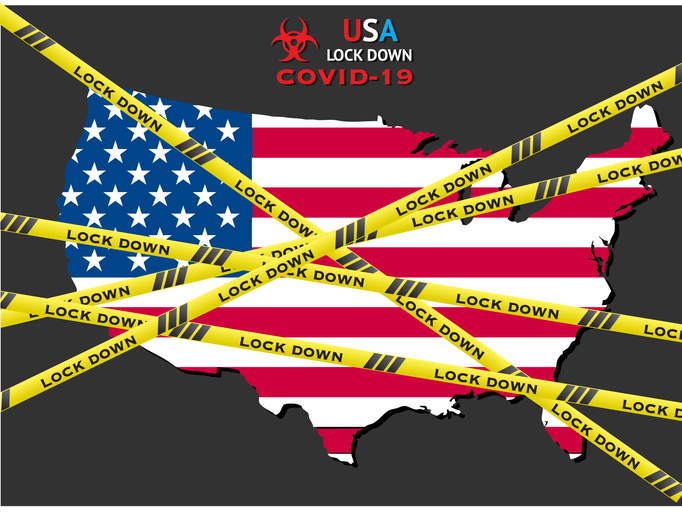Though most governors are now crediting restrictive lockdowns for curbing coronavirus numbers, good sense and personal choice are the real drivers behind limited social movement, one study found.
In their report, published in June by the National Bureau of Economic Research, “Fear, Lockdown, and Diversion: Comparing Drivers of Pandemic Economic Decline 2020,” authors Austan Goolsbee and Chad Syverson found that traffic dropped 60 percent during the pandemic, but only 7 percent was attributed to lockdown orders. The researchers used cell phone records to track traffic patterns during the first few months of the pandemic.
Measuring Common Sense
The sample-set, collected from March 1 to May 16, included more than 2.25 million business locations and weekly customer visitation data. Monthly visitation data was used before March 1.
“Our goal was to measure how much of the drop in consumer visit activity was caused by the lockdown order issued by states, counties and cities and how much happened because individuals chose to withdraw on their own accord because they didn’t want to be exposed to the disease,” Goolsbee told Health Care News.
What the researchers discovered was business visits were due to people making their own judgments, not lockdowns.
“We found that consumer visits to stores plummeted but that the drop was of very similar sizes on either side of a border that had a lockdown policy on one side and did not have on the other,” Goolsbee said.
Haircuts, for example, dropped 76 percent in Moline, Ill. when Illinois imposed a lockdown order. Across the river in Bettendorf, Iowa, where no lockdown order was in place, haircuts fell nearly 70 percent. The researchers looked at 2.5 million different stores in 110 industries across hundreds of counties where there were similar policy borders. They found the pattern to be “identical.”
“That type of evidence says to us that the lockdown orders themselves were not really what was driving things,” Goolsbee said.
Replication and Differences
One measure of the validity of a study is to see if the results can be replicated.
“We used cell phone location data because the creators of the data have made these data available to researchers to study COVID,” Goolsbee said. “Many other scholars have looked at these data as well. They provide close to real-time information at a very granular level of detail that you cannot easily get from other sources.”
Goolsbee and Syverson’s paper differed from previous studies by combining data at the business versus individual level with additional data on legal restrictions. This allowed them to investigate substitution patterns across businesses as well as aggregate activity to include local policy data.
“On the policy side, most studies use state-level information on S-I-P orders and legal restrictions aggregated by sites like the New York Times,” the paper reads. “In reality, however, a large number of counties and cities imposed lockdown orders separately from their states and before the state acted.”
What Officials Can Learn
The bottom line is consumer safety, and a successful market response can do that, Goolsbee says.
“There’s clearly a role for a centralized entity to enforce rules at least temporarily to slow the spread of the virus,” Goolsbee said. “But at a broader level, the fact that people are looking out for their own health and making their own decisions suggests that we would do best to remember the number one rule of virus economics, the way to fix the economy, is to slow the spread of the virus.”
Lockdowns can have a chilling effect when they are eventually lifted.
“Just telling people to go back out to stores fundamentally won’t work if they think they will get sick by doing so,” Goolsbee said. “It’s kind of like the airlines, the law is not forbidding people from flying. People are choosing not to fly. If you want them to fly, you have to convince them it is safe.”
Ashley Bateman (bateman.ae@googlemail.com) writes from Alexandria, Virginia.
Internet info:
Austan Goolsbee, Chad Syverson, “Fear Lockdown, and Diversion: Comparing Drivers of Pandemic Economic Decline 2020, the National Bureau of Economic Research, June 2020: https://www.nber.org/papers/w27432




















